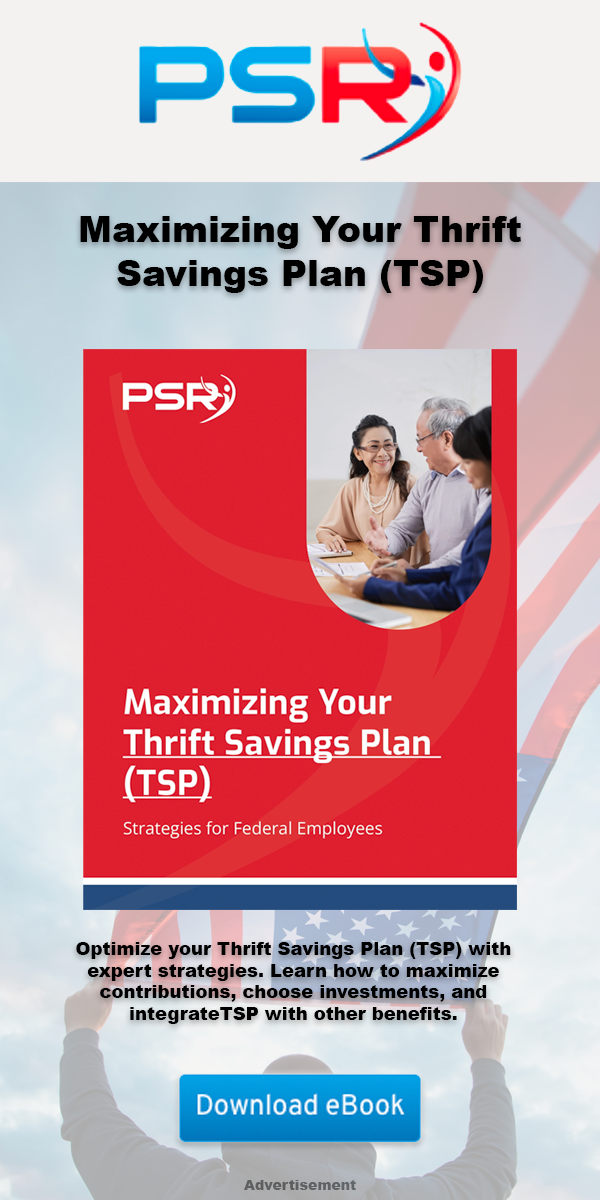Key Takeaways:
- Maximize Your FERS Benefits: Understanding the different components of FERS can help you make strategic choices to maximize your retirement income.
- Plan Early and Wisely: Knowing how your FERS benefits integrate with Social Security, TSP, and other federal benefits is crucial for long-term financial security.
FERS Benefits That Federal Employees Should Know About—Here’s What You Can Do to Make Them Work for You
Federal employees enjoy a range of benefits through the Federal Employees Retirement System (FERS). Understanding these benefits is crucial for making informed decisions that can significantly impact your financial future. This article explores the key components of FERS and provides actionable tips on how you can optimize them to ensure a comfortable and secure retirement.
Understanding the Core of FERS
- Also Read: What Happens to Your Federal Benefits After Divorce? Here’s the Lowdown
- Also Read: The Best FEHB Plans for 2025: Which One Fits Your Lifestyle and Budget the Best?
- Also Read: Special Retirement Options for FAA and LEO Employees: Are You Taking Advantage of What’s Available?
1. Basic Benefit Plan: The Foundation of Your Retirement
The Basic Benefit Plan is a defined benefit plan that provides federal employees with a pension based on their years of service and salary history. It forms the cornerstone of the FERS system, and while it might seem straightforward, several factors can influence how much you receive:
- Years of Service: The longer you work, the higher your pension will be. Typically, federal employees accumulate 1% of their high-three average salary per year of service. Those in special categories, such as law enforcement officers, firefighters, and air traffic controllers, often accumulate at a higher rate.
- High-Three Average Salary: This is the average of your highest-paid consecutive three years of service. Planning your career and promotions strategically can help you maximize this figure, ultimately increasing your pension payout.
2. Social Security Benefits: A Key Component
As part of FERS, federal employees pay into Social Security. This means that upon reaching eligibility age, you can collect Social Security benefits in addition to your FERS annuity. However, there are some critical considerations:
- Early Retirement Reductions: Claiming Social Security before your full retirement age (FRA) will result in a reduced benefit. Weighing the pros and cons of early claims versus waiting for the full benefit amount is vital.
- Coordination with Other Benefits: Integrating Social Security with your FERS annuity and TSP withdrawals can provide a balanced income stream. Understanding the rules and timing of each can help minimize tax liabilities and maximize your benefits.
TSP: Your Personal Retirement Savings Plan
The Thrift Savings Plan (TSP) is a critical component of FERS, acting as a 401(k)-style retirement savings plan with tax advantages and matching contributions from your employer. It offers federal employees the opportunity to build substantial retirement savings over time, but proper management is crucial.
3. Maximizing TSP Contributions
To make the most of your TSP, consider contributing enough to receive the full government match, which is typically up to 5% of your salary. Contributing more than the match, if possible, can significantly increase your savings:
- Traditional vs. Roth TSP: Deciding between traditional (pre-tax) and Roth (after-tax) TSP contributions depends on your current tax bracket and expectations for future taxes. Younger employees or those in lower tax brackets might benefit more from Roth contributions, while others may find the traditional TSP advantageous.
- Catch-Up Contributions: If you’re over 50, you’re eligible to make catch-up contributions to your TSP. Taking advantage of this can help boost your retirement savings as you near the end of your career.
4. Investment Strategy: Make Your Money Work for You
The TSP offers several investment options, including the G Fund (government securities), F Fund (fixed income), C Fund (common stocks), S Fund (small-cap stocks), and I Fund (international stocks). Balancing these options based on your risk tolerance and time horizon is key:
- Lifecycle Funds: For those who prefer a hands-off approach, the TSP offers Lifecycle (L) Funds that automatically adjust the investment mix based on your expected retirement date. These funds can be a convenient option for maintaining a balanced portfolio over time.
- Diversification: If you choose to manage your TSP actively, diversification is essential. Balancing riskier funds (like the C or S Fund) with more stable ones (like the G Fund) can protect your retirement savings during market volatility.
Retirement Eligibility and Annuity Types
Understanding your eligibility and the types of annuities available under FERS can help you plan a retirement strategy that maximizes your benefits while minimizing any penalties.
5. Minimum Retirement Age (MRA)
The MRA varies depending on your birth year, generally falling between 55 and 57. Retiring at your MRA with at least 30 years of service qualifies you for an immediate, unreduced annuity. However, if you retire before age 62, you may face penalties unless you meet specific requirements, such as:
- Early Retirement Options: The MRA+10 option allows you to retire with at least 10 years of service, but your annuity will be reduced by 5% for each year you’re under 62. This may be suitable for those who prioritize leaving the workforce early over receiving the full benefit amount.
6. Special Provisions for Certain Employees
Law enforcement officers, firefighters, and other special category employees have unique retirement provisions that allow for earlier retirement and higher benefit accrual rates. Understanding these provisions is crucial for those eligible, as they can provide significant advantages in retirement planning.
Making FERS Benefits Work for You
To maximize your FERS benefits, it’s essential to have a well-rounded strategy that accounts for all aspects of your retirement package.
7. Coordinating FERS Benefits with Other Income Streams
Combining FERS benefits with Social Security, TSP, and other savings accounts or investments can create a diversified and stable income stream. Consider seeking professional financial advice to tailor a strategy that suits your retirement goals and timeline. Some strategies include:
- Delaying Social Security: Waiting until your full retirement age or even age 70 can increase your Social Security benefits by up to 8% per year, which can significantly enhance your income in the later years of retirement.
- Strategic Withdrawals from the TSP: Understanding the tax implications of withdrawals and timing them properly can help manage your tax bracket and retain more of your retirement income.
8. Survivor and Disability Benefits: Securing Your Future
FERS offers survivor and disability benefits that can provide a safety net for your loved ones or yourself in case of unforeseen circumstances. These benefits are often overlooked but can be critical in ensuring long-term financial stability:
- Survivor Annuities: Married employees can choose a survivor annuity option, which reduces the amount of the employee’s pension but provides continued income to a surviving spouse. Understanding the different survivor annuity options can help federal employees plan effectively for their family’s future.
- Disability Retirement: FERS also offers disability benefits for those unable to continue working due to a medical condition. This can provide financial support if you meet the eligibility criteria, allowing you to access benefits before your minimum retirement age.
Ensuring a Secure Retirement with FERS
Federal employees have access to one of the most comprehensive retirement systems in the country. However, to make the most of it, it’s essential to understand each component and how they work together. From strategically managing your TSP to coordinating your Social Security benefits and planning for potential survivor needs, taking a proactive approach is key. A well-planned retirement strategy can make FERS work for you, ensuring that you enjoy a stable and comfortable retirement.













